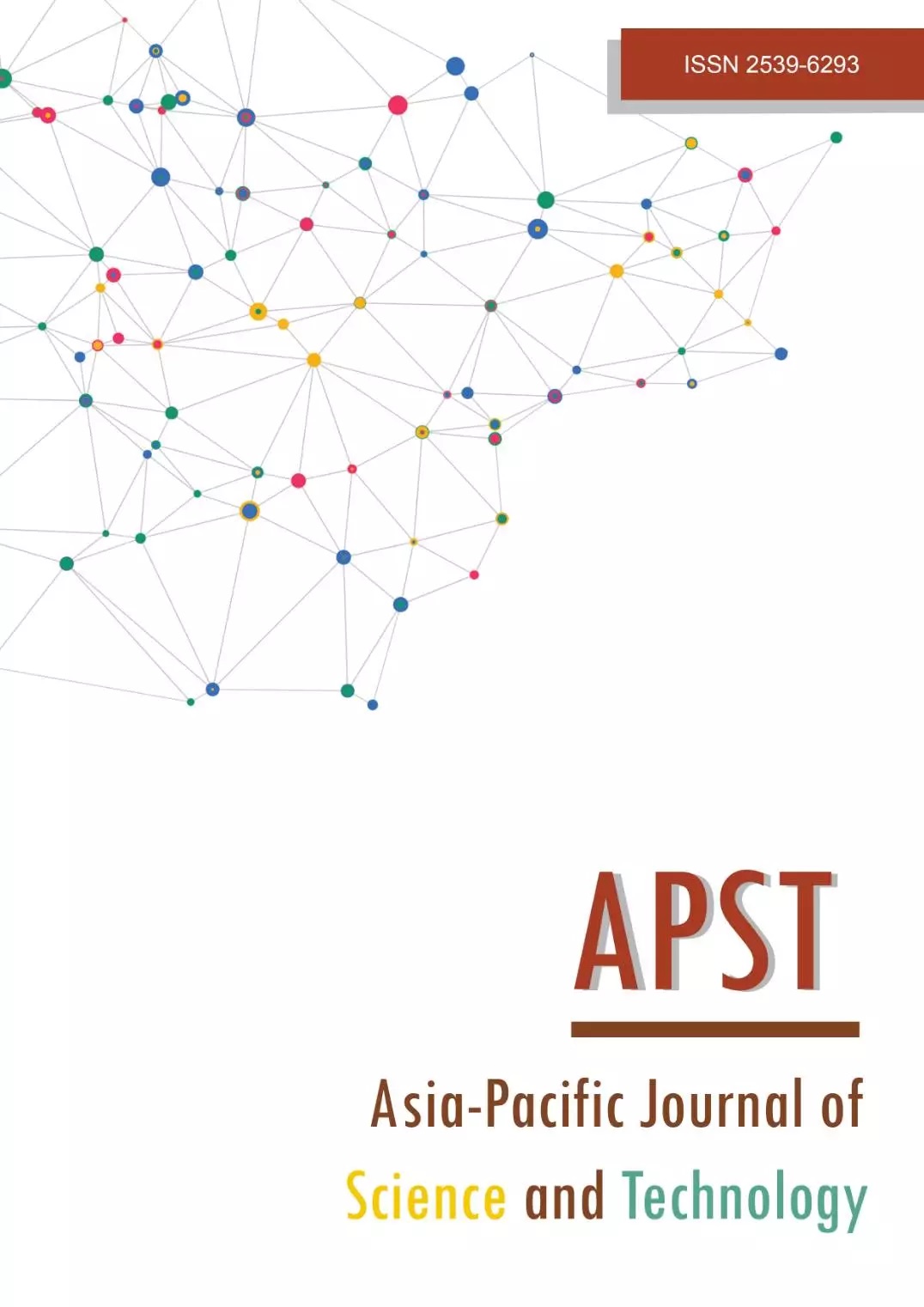Effective field capacity prediction model for management of UAV spraying
Main Article Content
Abstract
The use of pesticides in agriculture is critical to maintaining the quality of agricultural production. Farmers are required to finish their spraying with high efficiency due to constraints in cost and time. Nevertheless, farmers need more knowledge and information required for managing Unmanned Aerial vehicles (UAV) spraying and providing the conditions of their fields because both data (management and field conditions) affect capacity. The field capacitance model was generated from UAV spraying (Tiger Drone) on a sugarcane field. Consequently, this research intended to discover the prediction model for effective field capacity for UAV spraying (Tiger Drone) in the sugarcane field. The procedure began by collecting the data of nine UAVs spraying in the sugarcane fields, for example, field, crop, UAV condition, and working times, to develop the prediction model for the UAV spraying in the sugarcane field. The prediction model was then validated using nine sugarcane fields collected correspondingly to the model’s output. The conclusion presented was that the model’s root mean square error (RMSE) was 0.14 m²/s. Farmers and providers can apply a predictive model to manage the spraying process and provide their field conditions.
Article Details

This work is licensed under a Creative Commons Attribution-NonCommercial-NoDerivatives 4.0 International License.
References
Dormon AH, Leeuwis C. Effectiveness and profitability of integrated pest management for improving yield on smallholder cocoa farms in Ghana. Int J Trop Insect Sci. 2007;27(1):27-39.
Srivastava T, Singh A, Srivastava S. Critical period of crop-weed competition in sugarcane ratoon. Indian J Weed Sci. 2002;34(3 and 4):320-321.
Sudhiarom S. Study and improvement on the efficacy of pest control [Internet]. 2016 [cited 2021 Feb 27]. Available from: https://www.doa.go.th/research/attachment.php?aid=2206.
Oerke EC. Crop losses to pests. J Agric Sci. 2006;144(1):31-43.
Sharma A, Kumar A, Shahzad B, Tanveer M, Sidhu GPS, Handa N, et al. Worldwide pesticide usage and its impacts on ecosystem. SN Appl Sci. 2019;1(11):1446.
Zhang C, Kovacs JM. The application of small unmanned aerial systems for precision agriculture: a review. Precis Agric. 2012;13(6):693-712.
Kulkarni SC, Natu AS. Adoption and utilization of drones for advanced precision farming: a review. Int J Recent Innov Trends Comput Commun. 2016;4(5):563-565.
Doungpueng K, Saengprachatanarug K, Posom J, Chuan-Udom S. Selection of proper combine harvesters to field conditions by an effective field capacity prediction model. Int J Agric Biol Eng. 2020;13(4):125-134.
Mogili UR, Deepak BBVL. Review on application of drone systems in precision agriculture. Procedia Computer Sci. 2018;133:502-509.
Zhang XQ, Song XP, Qin ZQ, Zhang BQ, Wei JJ, Li YR, et al. Effect of spray parameters of drone on the droplet deposition in sugarcane canopy. Sugar Tech. 2020;22(2):583-588.
Opanukul W, Saicomfu A, Pinyawattoe P, Tiantad I, Thongdang B, Sukprasert V, editors. Drone research for organic agriculture. Proceeding of the 18th TSAE national Conference; 2017 Sep 7; Bangkok, Thailand. 2017.
Punyawattoe P, Worawit S, Chaiyasing N, Supornsin S. The efficacy of the unmanned aerial vehicle (UAV) for controlling rice dirty panicle disease. Thai Agric Res J. 2019;37(1):27-36.
Lou Z, Xin F, Han X, Lan Y, Duan T, Fu W. Effect of unmanned aerial vehicle flight height on droplet distribution, drift and control of cotton aphids and spider mites. Agronomy. 2018;8(9):187.
Martinez-Guanter J, Agüera P, Agüera J, Pérez-Ruiz M. Spray and economics assessment of a UAV-based-ultra-low-volume application in olive and citrus orchards. Precis Agric. 2019;21(1):226-243.
Stack L, editors. New England greenhouse floriculture guide; a management guide for insects, diseases, weeds and growth regulators. Northeast Greenhouse Conference; 2010 Nov 3-4, Worcester, United States. Massachusetts: University of Massachusetts Amherst; 2010.
Koondee P, Saengprachathanarug K, Posom J, Watyotha C, Wongphati M. Study of field capacity and variables of UAV operation time during spraying hormone fertilizer in sugarcane field. Earth Environ Sci. 2019;301:012020.
Yousaf K, Iqbal M, Iqbal T, Hanif M. Effect of field plot design on the efficacy of boom sprayer. Univers J Agric Res. 2014;2(7):236-241.
Wang G, Lan Y, Yuan H, Qi H, Chen P, Ouyang F, et al. Comparison of spray deposition, control efficacy on wheat aphids and working efficiency in the wheat field of the unmanned aerial vehicle with boom sprayer and two conventional knapsack sprayers. Appl Sci. 2019;9(2):218.
Basso M, Stocchero D, Ventura Bayan Henriques R, Vian AL, Bredemeier C, Konzen AA, et al. Proposal for an embedded system architecture using a GNDVI algorithm to support UAV-based agrochemical spraying. Sensors. 2019;19:5397.
Hunt D. Farm power and machinery management. 9th ed. Iowa, ISU press; 1995.
American Society of Agricultural and Biological Engineers (ASABE) [Internet]. Michigan: The Association; c1907-2021 [cited 2021 May 18]. ASABE standards published. Available from: https://www.a
sabe.org/PublicationsStandards/StandardsDevelopment/NationalStandards/Published-Standards.
Chuan-Udom S. Grain harvesting machines. 1st ed. Khon Kaen: Khon Kaen University Press; 2013.
Mostafa KM, Quazi KH, Ehsan HC. Development of a remote sensing-based rice yield forecasting model. Span J Agric Res. 2016;14(3):1-11.


